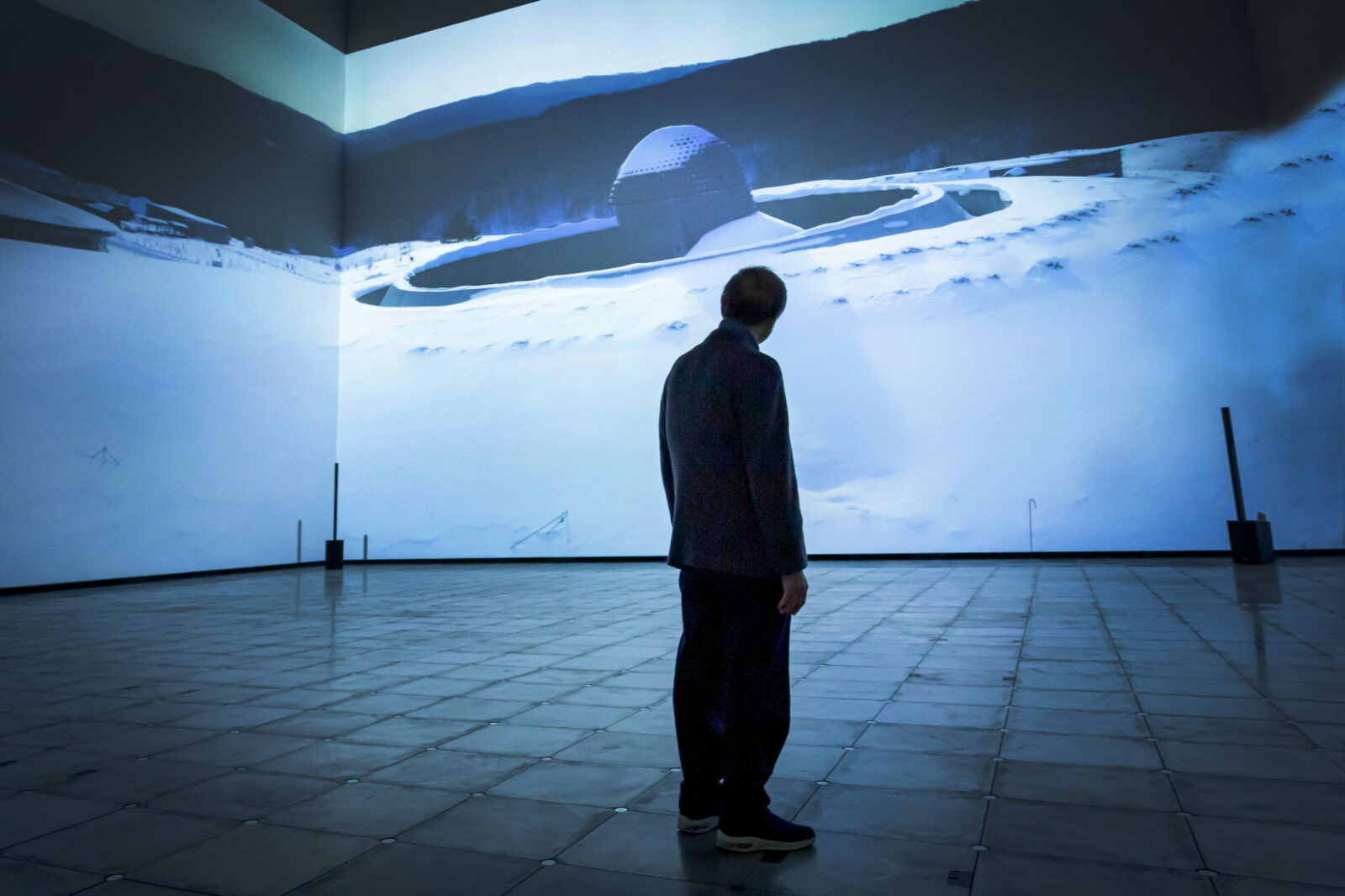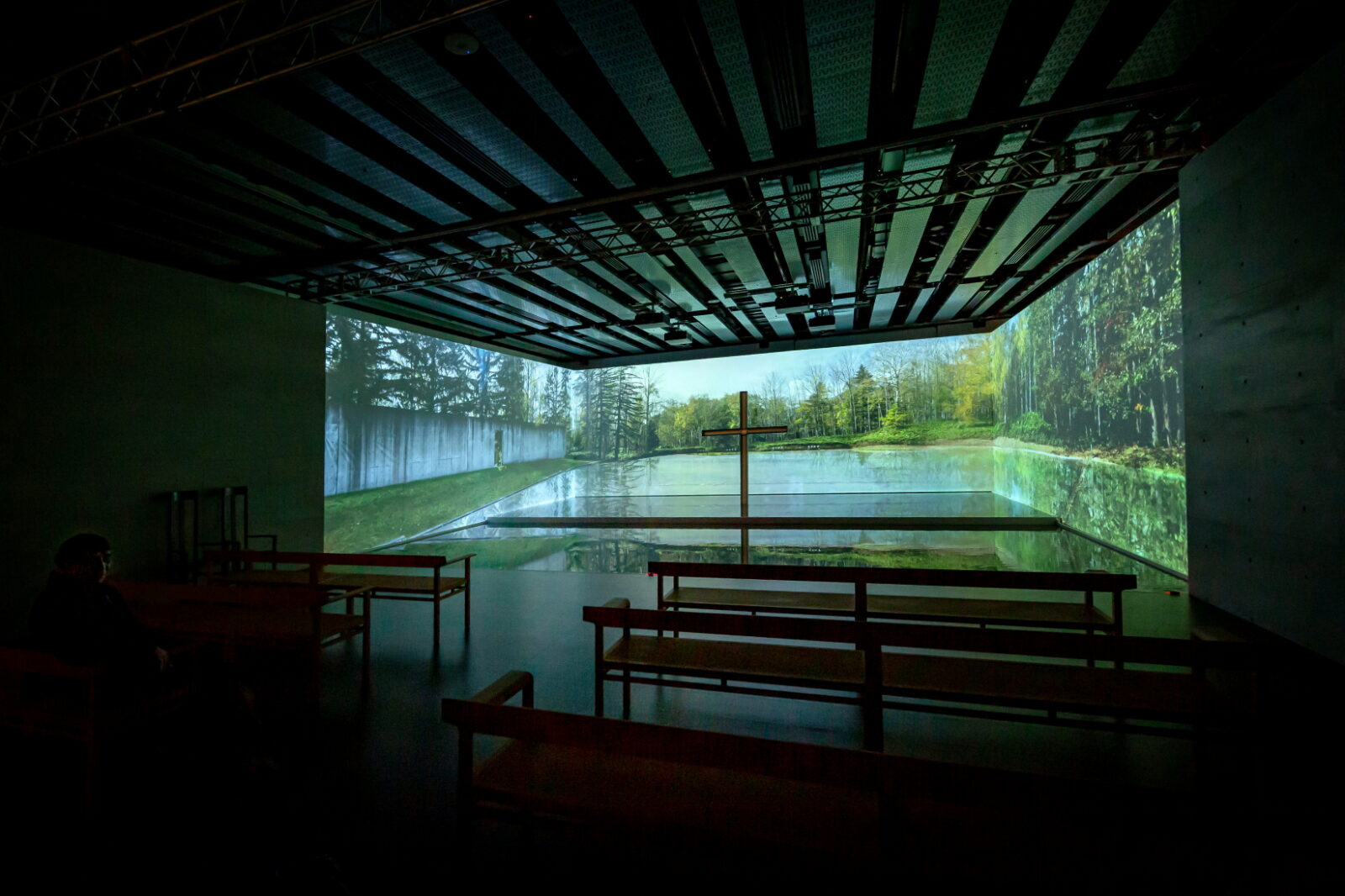Voices
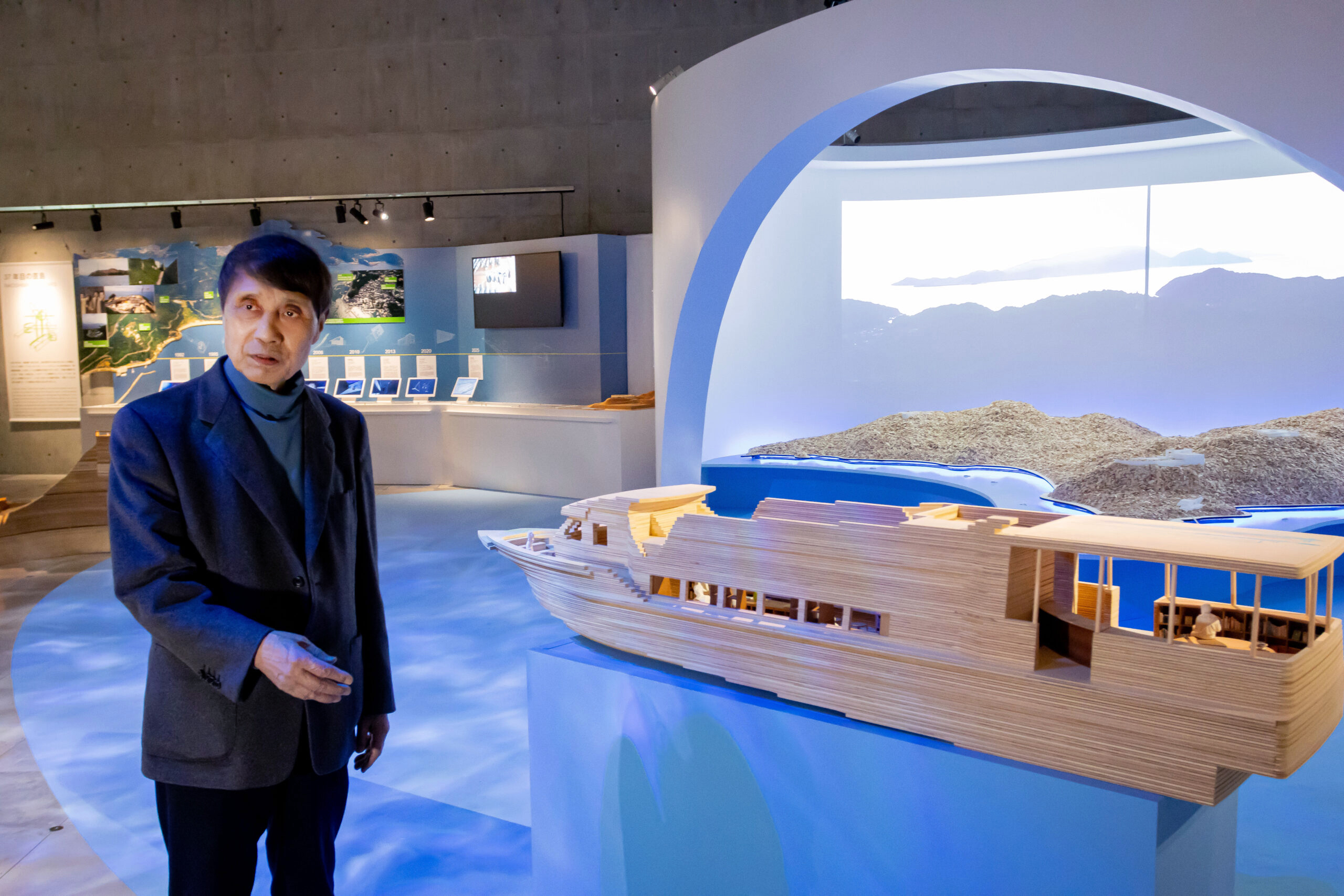
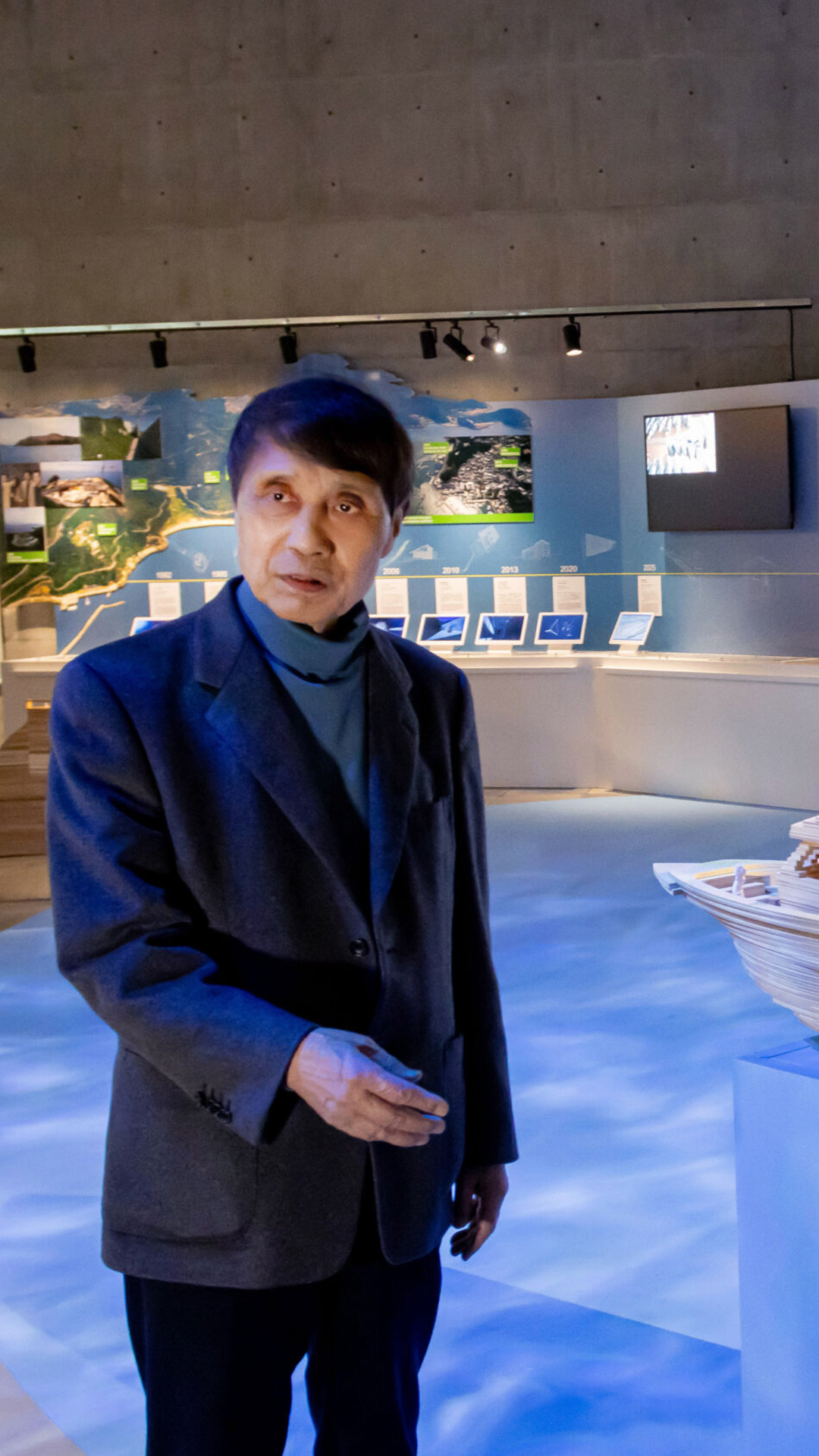
21 July[2025]
Creating Innovation in an Age of Chaos : Tadao Ando’s Determination and Power Surging in “Youth” – Architect Tadao Ando
Having been involved in the development of Umekita for over 20 years and overseen the design of VS.,
Tadao Ando will finally hold his long-awaited exhibition from spring to summer of 2025. What message will a distinguished architect – renowned both in Japan and abroad for his works centered on the theme of “dialog with nature” – convey from this freshly developed green space? Amid the excitement surrounding the first World Expo in Osaka in half a century, Ando’s gaze is fixed firmly on the future ahead.
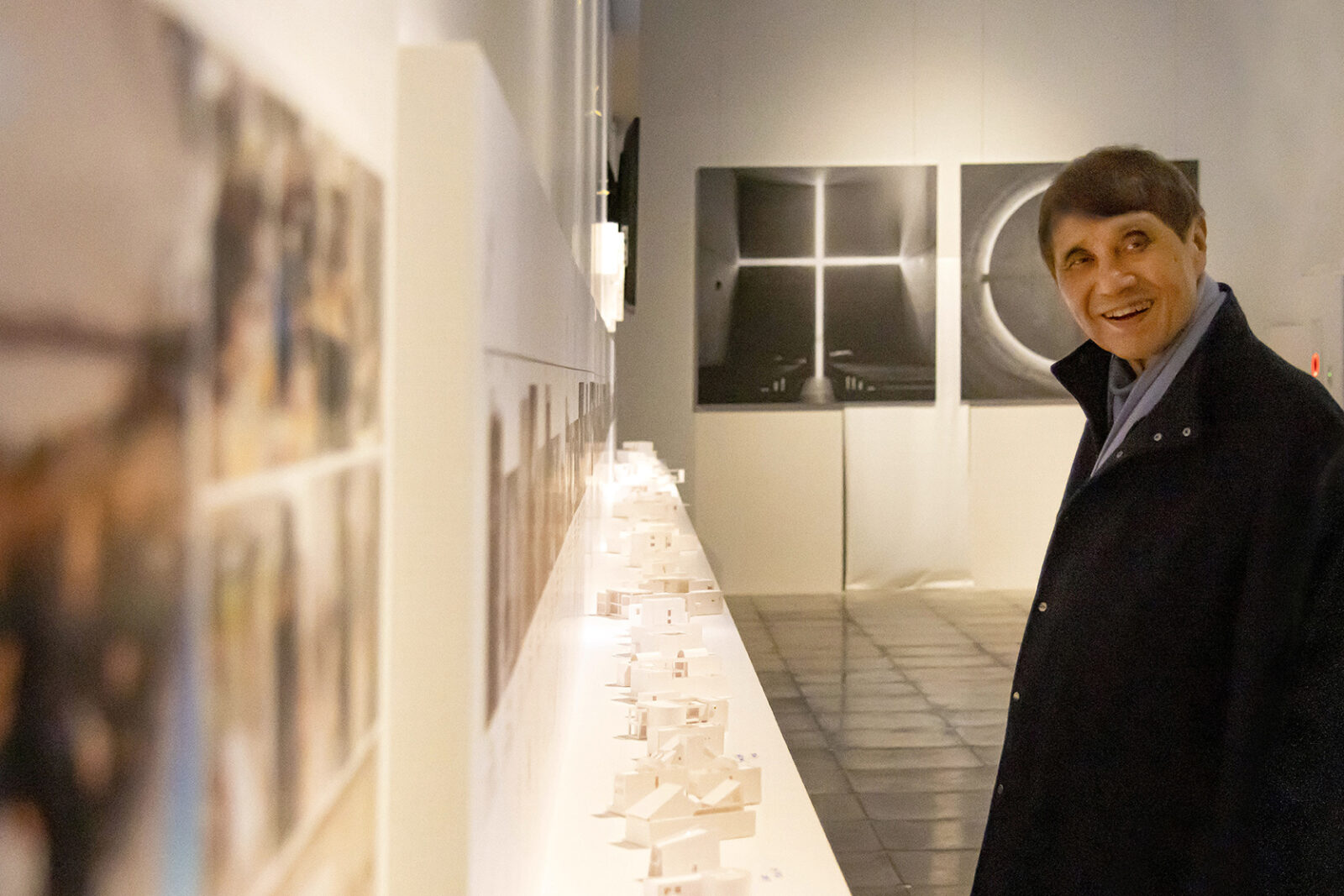
From the Greenery in front of Osaka Station,
Innovation Begins to “Seeps Out.”
– Mr. Ando, you have been involved in the development of “Umekita” – including Grand Front Osaka and Grand Green Osaka – since the very beginning, haven’t you?
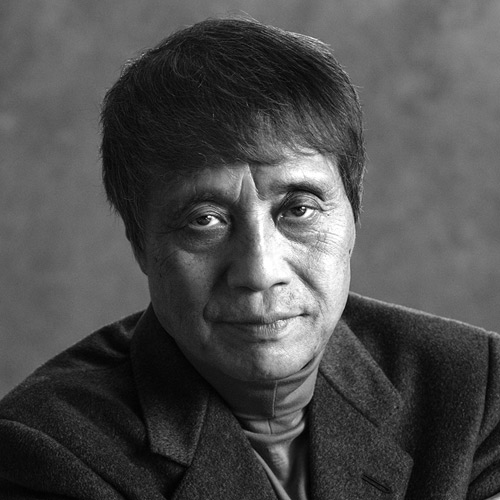
I have been involved in the development of Umekita since the early 2000s, starting from the time of the initial competition. From the outset, there was a shared vision among all stakeholders: because this was said to be “the last prime site in Kansai Area,” we felt “it should not follow the conventional, economy-first model, but instead be shaped around strong public values”. The proposal that clearly reflected this idea was chosen in the competition. Following that vision, the first phase of the project emphasized integrating high-density planning with concepts like “water and greenery” and “neighborhood character.” The design highlights “gaps” that let liveliness spill into the surrounding areas, such as the water basin and arcade that radiate from the station square connected by a large staircase.
One particularly meaningful element was the development of the ginkgo-lined main street on the western side (the road that runs between Grand Front Osaka and Grand Green Osaka today). There is one row within the premises and two rows on the sidewalk, for a total of three rows. With the completion of the second phase, this will double to six rows. It serves as an homage to “Midosuji,” a symbolic street of Osaka, created through a joint effort between the public and private sectors. I believe it will have a significant impact on the landscape of Umeda.
As for the second phase, we’ve long been saying, “Let’s make the rest of it a green park.” With the approval of the prefectural and municipal governments, an unprecedented “redevelopment” project was realized, with “half of the development area in front of the terminal station designated as a green park”. Looking back now, I’m still impressed that we managed to take such a bold step.
– What aspects did you focus on when overseeing the design of VS.?

Grand Green Osaka has two key themes: “greenery” and “innovation,” and VS. is positioned as a facility that embodies that innovation. I understood it as a “place that inspire people’s potentials.”
When creating a place that holds potential, what I envision is a “blank space” without a specific function. This blank space is not just an empty void, but rather a pause that fosters anticipation of something emerging and invites dialogue. If this “blank space” is to be the main focus, the architecture – the “physical form” – should remain as discreet as possible. In line with the concept, most of the VS.’s architecture is built underground. The only parts of the building visible above ground are two cubes overlapping – the upper section of the main studio with its high ceiling, and the glass-enclosed entrance. The outer walls are covered in ivy, which will, over the years, blend into the greenery of the park landscape. The goal was to create an “invisible” architecture – one that quietly holds a dynamic energy within.
In any case, given its ideal location in the middle of an urban park in front of the terminal station, it would be wonderful if the architecture and green park overlapped beyond the boundary between inside and outside, so that the creative atmosphere and artistic space born there could gradually permeate from the park to the entire city of Osaka.
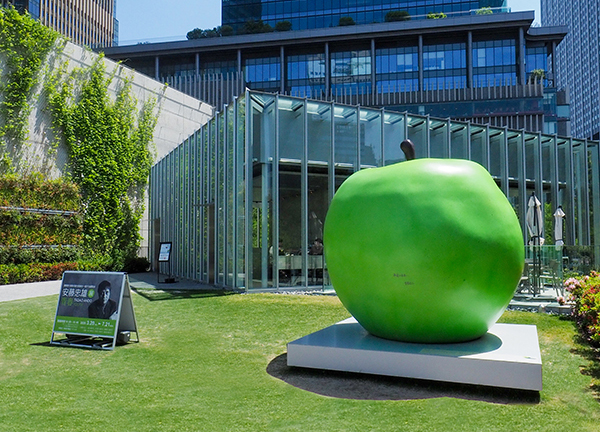
Various approaches to “exhibiting”
architectural works that are not physically present
– One of the highlights of this exhibition is the near full-scale reconstruction of the “Chapel on the Water”, along with spatial installations from the Naoshima project.

What makes exhibitions of architecture and architects unique is that the actual buildings—the real architectural works – are not present at the venue. Instead, sketches, drawings, and models documenting the process of creating the building are displayed. For people unfamiliar with “architecture”, this can feel a bit hard to relate to. In an effort to make our works more understandable and relatable, we have been experimenting over the past few years with recreating distant architectural spaces at full scale within the exhibition venue. I thought the work to be recreated should reflect the foundation of my work. So, for this exhibition, I have chosen “Chapel on the Water,” my early work that explores the theme of dialogue with nature. To bring it as close to reality as possible, we have filled the exhibition space with actual water, and placed a cross floating in it.
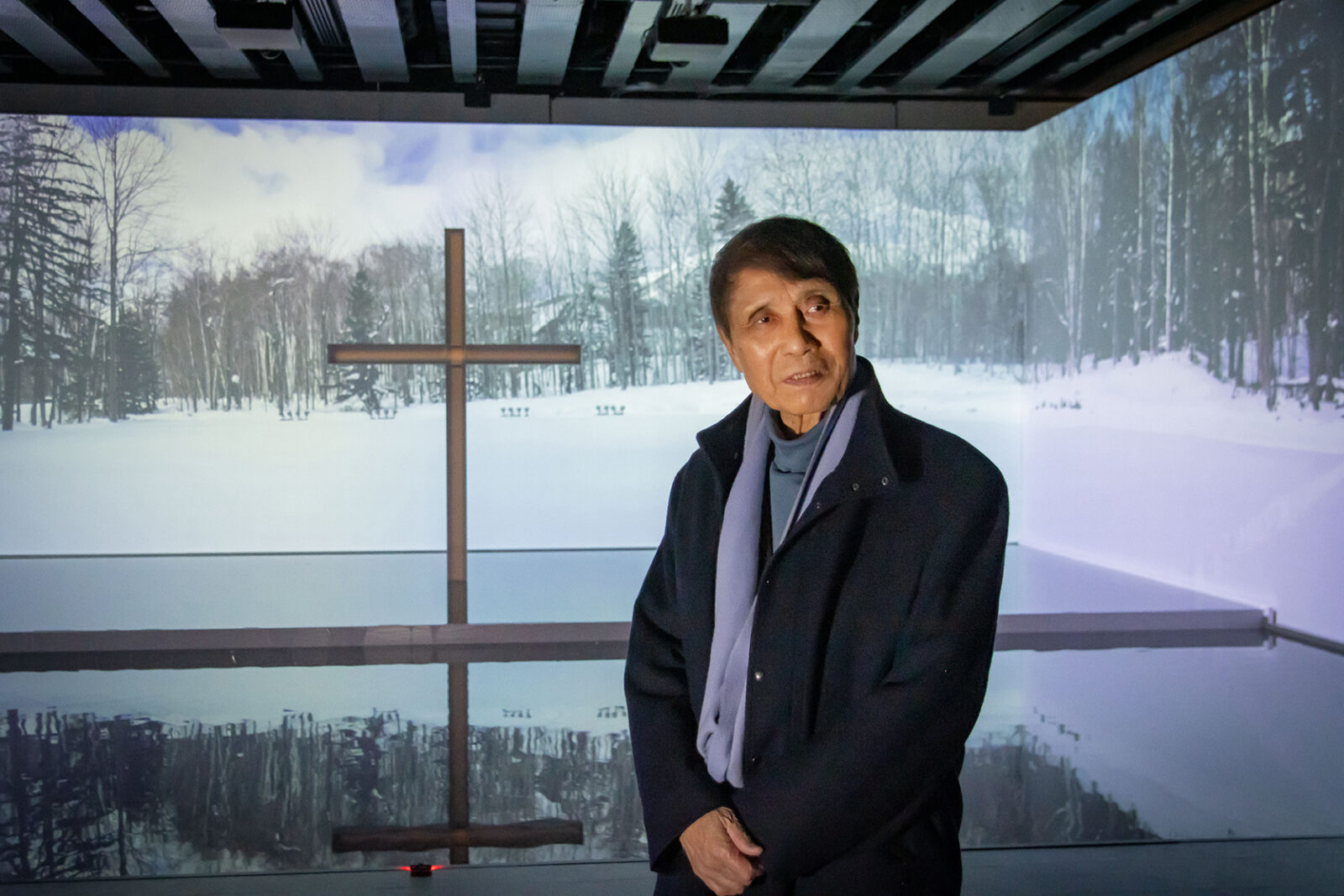
II have been involved with Naoshima for 37 years now, having completed 10 projects there. Instead of focusing on each individual piece of architecture, I wanted to share the entire process as a story — through a spatial installation combining a model of the island, panoramic video, and music.
– We understand that the video exhibition at STUDIO A was newly filmed for this exhibition. What kind of approach did you have in mind for presenting it?

VS. has a cube-shaped studio with a ceiling height of 15 meters. Making full use of this space, we created an original immersive video experience projected onto three walls. The works featured are the “Church of the Light”, the “Hill of the Buddha at the Makomanai Takino Cemetery” in Hokkaido and “Bourse du Commerce” in Paris. When visitors step inside, they are surrounded by the visuals and feel as if they are inside these architectural spaces that do not physically exist in that place. The video editing team put a lot of effort into creating this sensation. The scale is unlike everyday experiences, and it’s fascinating to realize just “how far virtual technology can take us.”
“Moving forward will lead to more exciting work”
In 2025, right in the midst of his “youth.”
– This time, the exhibition is being held in your home town, Osaka. I am also intrigued by the title “Youth”.

I wish to give back to the city of Osaka, its people, and society – for allowing someone like me, who had no education or qualifications, to become an architect.
This exhibition is not just about showcasing my architecture, but also an attempt to help revitalize the Kansai area, which has been weakened under Tokyo’s centralization. With the World Expo beginning in April, I hope this exhibition can serve as a prelude.
I established my office and started working at the age of 28. With no academic background and nothing but disadvantages, I threw myself into every job, no matter how small, driven by the constant pressure that missing a chance could mean the end. I’ve kept running ever since.
In my 60s and 70s, I was diagnosed with cancer and lost five organs after two surgeries. Yet, I never gave up architecture and continue to work just as passionately as before. In fact, I feel even bolder and more energetic now than I did before I got sick (laughs). The driving force behind this is simply my “aspiration to create something better”, and my “belief that moving forward will lead to more exciting work”.
The person who shared this poem with me – “Youth is not a time of life; it is a state of mind.” – was Mr. Osamu Uno of Toyobo, who served as chairman of the Kansai Economic Federation. Regardless of age, if we want to live fulfilling lives, I believe everyone should embrace this spirit of “youth.” Climate change, demographic challenges, economic disparity, international conflict, the unfettered proliferation of AI… The world is in turmoil, filled with uncertainty about the future. And yet, it’s precisely in times like these that the spirit of “youth” becomes essential. When there’s no path ahead, we must be prepared to carve one ourselves. There’s no guarantee of reward. But if we keep pushing forward without giving up, the light will appear – somewhere, someday. My own life is proof of that: I have made it this far by continuing to create, continuing to think, and surviving each day at the edge. Through this exhibition, I hope to share that message.
